The Department of the Navy's (DON) FY 2024 President's Budget (PB24) request is $255.8B, an increase of $11.1B or 4.5% from the FY 2023 enacted budget.
The PB24 request reflects the nation's priorities as detailed in U.S. strategic guidance. At the top of this hierarchy is the President's National Security Strategy followed by the 2022 National Defense Strategy. Our request supports the tenets of our national defense that are integrated deterrence, campaigning, and actions that build enduring advantages. Secretary Del Toro's strategic guidance solidifies that we are One Navy-Marine Corps Team, and it remains fully nested within the National Defense Strategy. The Secretary identifies three enduring priorities: strengthen maritime dominance, build a culture of warfighting excellence, and enhance strategic partnerships.
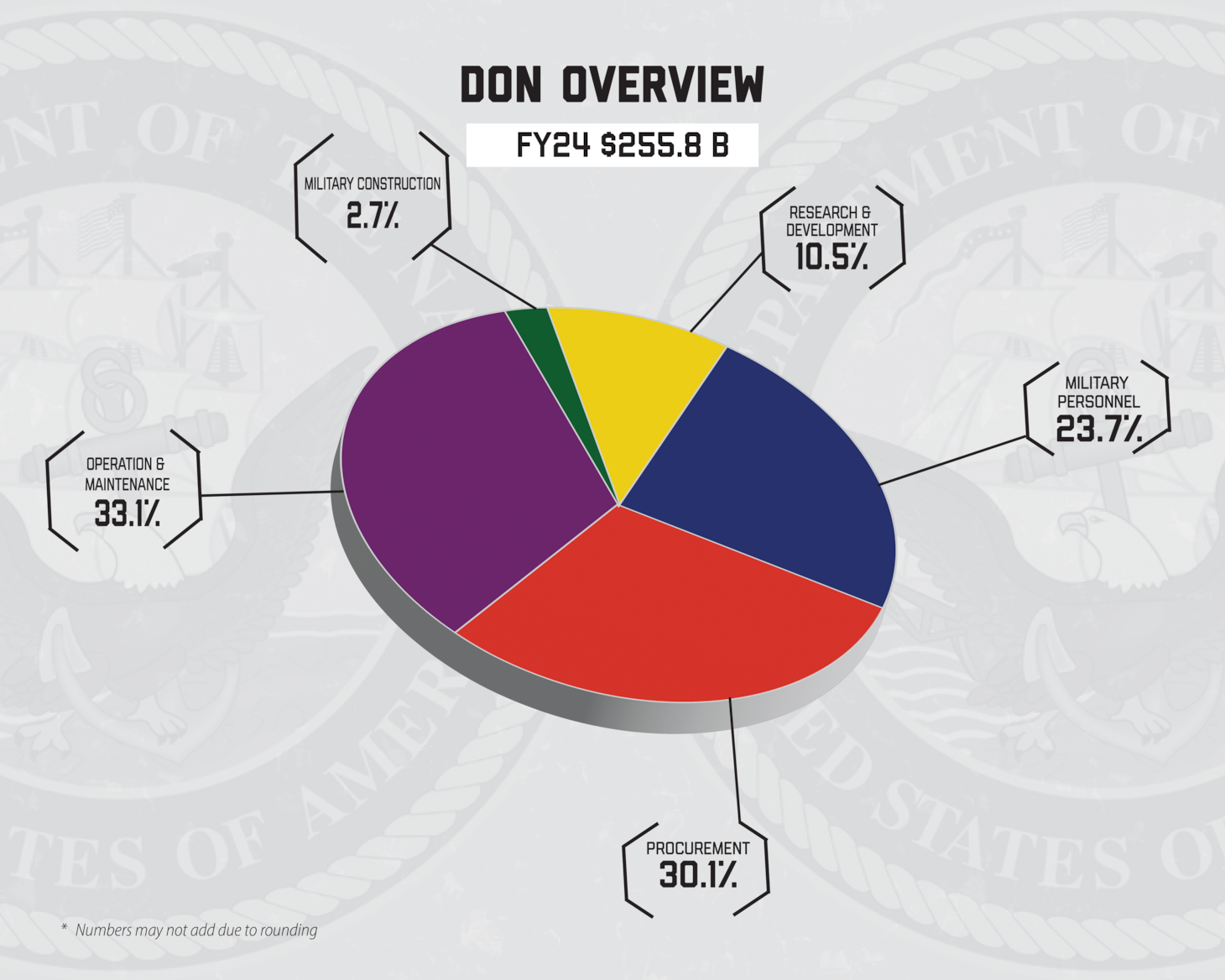
The Chief of Naval Operations (CNO) provides the direction for maintaining the world's preeminent naval force as an investment in the security and prosperity of the United States - a security that has supported the global economy since World War II. The Commandant's Force Design directs that we continue to build the Marine Corps as our nation's expeditionary crisis response force.
Aligned with Secretary Austin's three priorities, our request demonstrates the Department's commitment to providing a ready, modernized, and capable naval force that continues to be the nation's primary instrument of sea control both now and into the future. PB24 resources the second Columbia-class submarine, our nation's most survivable leg of the nuclear triad, and resources an on-track delivery of the first vessel in FY28. Our request funds both private and public sector ship maintenance to 100%, with a focus on increasing capacity and retaining highly skilled labor at our public shipyards. Research & Development increases by nearly a billion dollars, investing in modernizing our warfighting capabilities across all domains. We also added nearly two billion dollars to our weapons programs, investing in critical munitions and supporting multi-year procurement contracts. Our PB24 request contains a substantial 5.2% pay raise for military and civilian personnel while we expand access to mental health care and provide significant resources towards the prevention of sexual assault and harassment.

For ship construction, the Department requests to procure an additional nine battle force ships: one Columbia-class submarine, two Virginia-class submarines, two-Arleigh Burke-class guided-missile destroyers, two Constellation-class guided-missile frigates, one John Lewis-class fleet replenishment oiler, and one submarine tender. FY 2024 includes a reduction of 11 ships, eight of which are before their end-of-service life: two littoral combat ships (LCS), three cruisers (CG), and three dock landing ships (LSD).
With $1.9 billion requested in FY 2024, the Department will finance the seventh increment of funding for the third Ford-class carrier, USS Enterprise (CVN 80), and the sixth increment of funding for the fourth Ford-class carrier, USS Doris Miller (CVN 81). The Columbia-class program request is $5.8 billion and includes the first of two increments of funding for the second submarine to be awarded in FY24.
For aircraft procurement, the PB24 request of $17.3B supports the procurement of 88 aircraft including 35 F-35s, 26 Multi-Engine Training System, 15 CH-53K, 5 MQ-9A, 3 MQ-25, 2 MQ-4, and 2 KC-130Js, as well as modification, spares, and support equipment. This request completes aircraft procurement of KC-130J, MQ-4C and MQ-9A in FY24.
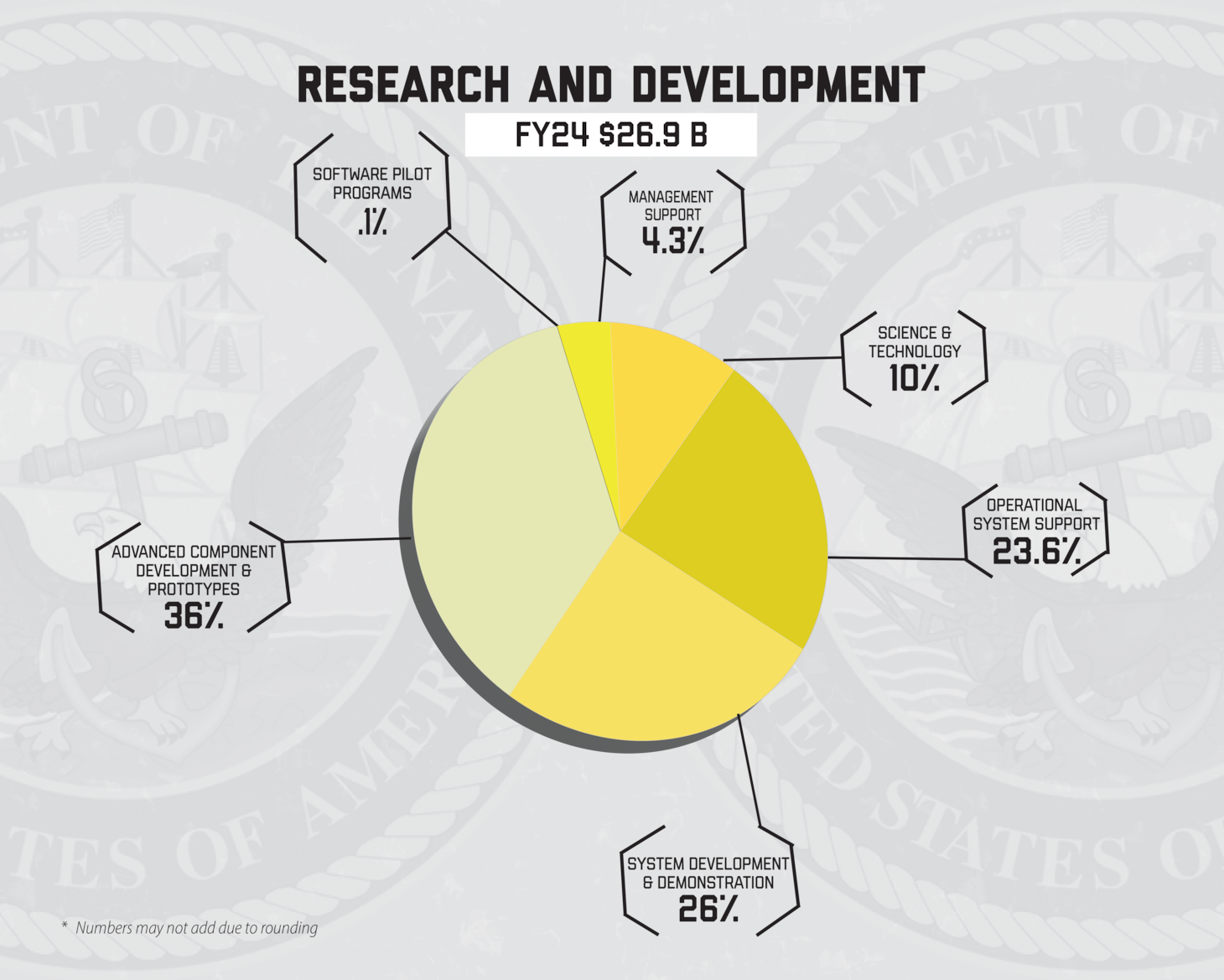
The DON's FY 2024 Research, Development, Test and Evaluation, Navy (RDT&E, N) budget supports the DON future force by funding development and deployment efforts and supporting capabilities across the spectrum of conflict. Science and technology (S&T) research is vital to provide for future technologies that support innovative capabilities in shipbuilding, aviation, weapons, and expeditionary equipment. Beyond the S&T phase, research and development (R&D) is fundamental to major acquisition programs such as the Columbia class ballistic submarine program, which recapitalizes our strategic nuclear deterrent. Other major areas of R&D effort include investments in future aircraft carrier, surface, submarine, and logistics vessels; unmanned systems; electromagnetic warfare; and cyberspace warfare. The FY 2024 RDT&E, N budget provides investment in the development of Conventional Prompt Strike (CPS) to deliver a hypersonic offensive strike weapon. The budget also accelerates development of the Navy Laser Family of Systems (NLFoS) to provide Navy ships with laser weapons in the protection against near-term threats.
The Marine Corps RDT&E budget supports continued investment in modernization and innovation to support Force Design 2030. This includes the development of Marine Littoral Regiments (MLRs), defensive missile systems, communication systems, and advanced vehicles. Marine Corps RDT&E programs are focused on developing the force with a focus on the Indo-Pacific region.
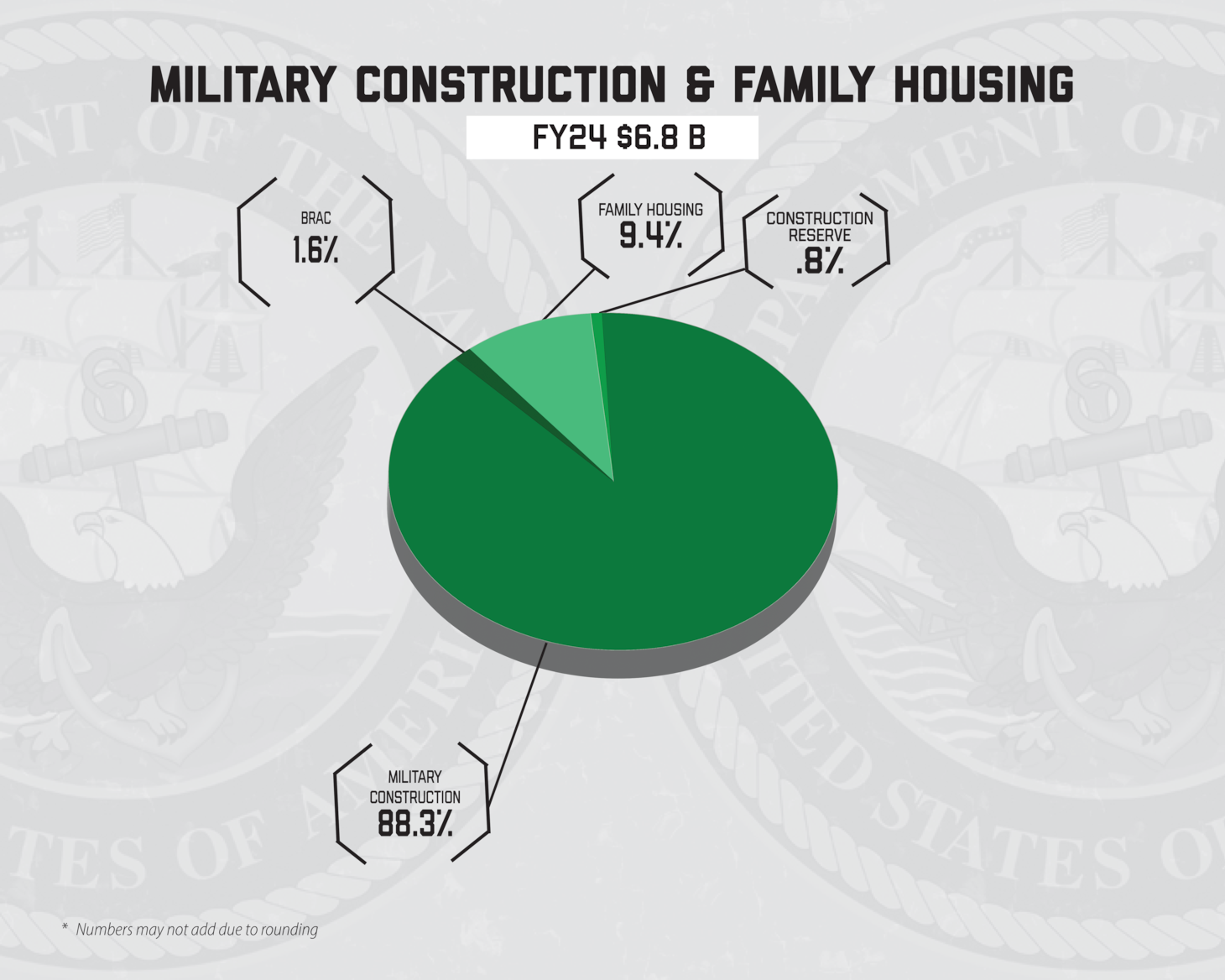
The FY 2024 budget request of $6.1 billion finances 35 military construction baseline projects in support of the Department's critical goals. Of these, 19 are for the active Navy, 14 are for the active Marine Corps, and two are for the Marine Corps Reserve. PB24 helps expand our forward presence and strengthen maritime dominance through affordable investments in multiple ship, aviation, and ground combat training, operations, and maintenance facilities and infrastructure.
The Department's Shipyard Infrastructure Optimization Program (SIOP) will deliver efficient and modernized shipyards by upgrading existing dry docks and building new ones, reimaging the physical layout of the shipyards, and replacing antiquated capital equipment with modern machines. Successful implementation of SIOP will ensure the four shipyards are ready and able to support the class maintenance plan for the Navy's current and future submarines and aircraft carriers. Naval shipyard infrastructure modernization projects at shipyards supporting submarine and aircraft carrier force structure and maintenance requirements and include Multimission Dry Dock #1 Extension, Phase 1 Increment 4, Portsmouth Naval Shipyard, Kittery, ME ($544.8 million), Dry Dock 3 Extension & Lock System Replacement Increment 2, Joint Base Pearl Harbor-Hickam, HI ($1,318.7 million), Dry Dock Saltwater System for CVN-78 Increment 2, Norfolk, VA ($81.1 million), Shipyard Electrical Backbone, Naval Base Kitsap ($195.0 million), and Planning and Design ($145.0 million).
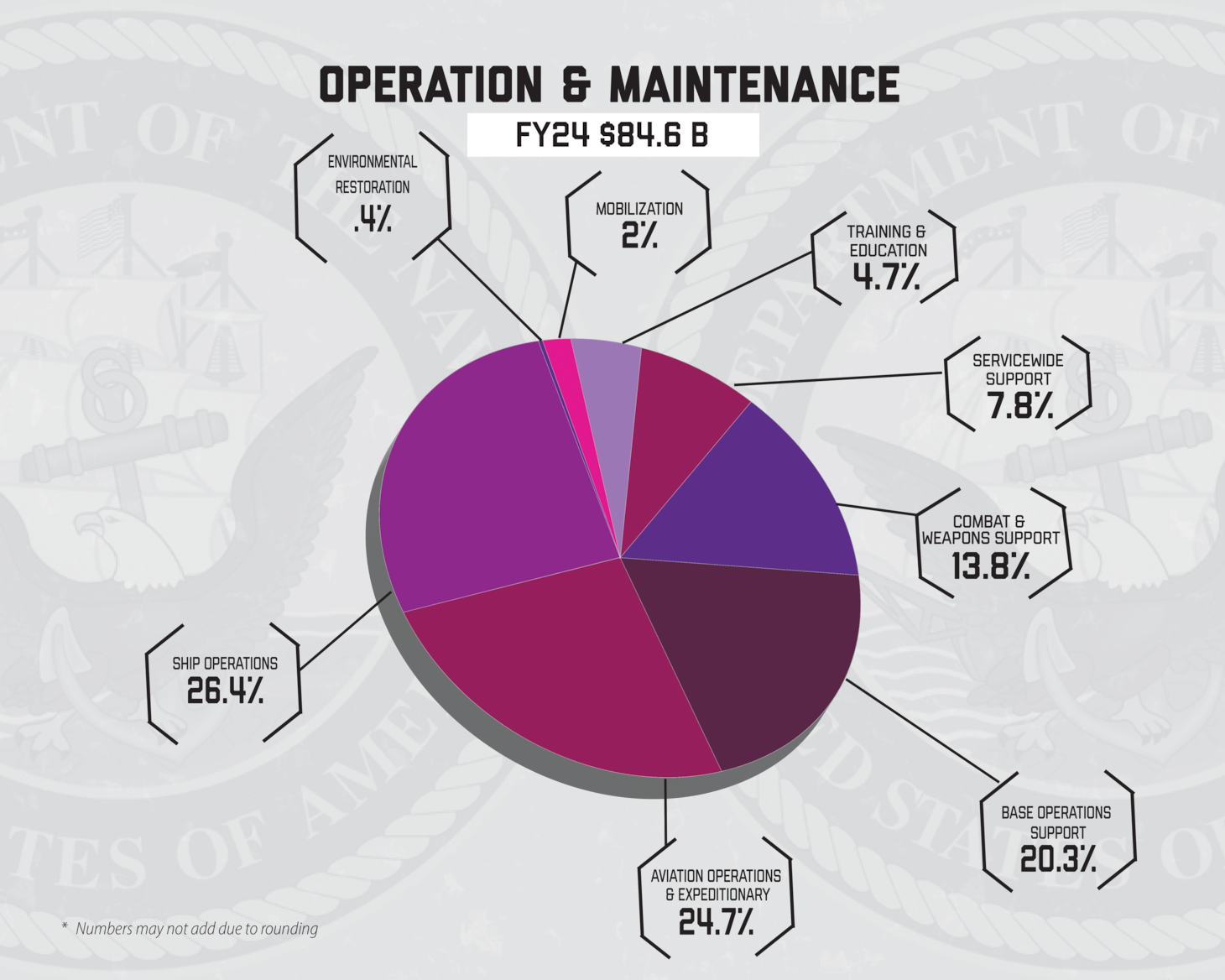
The Navy and Marine Corps team must be ready to generate and bring to bear integrated, all-domain naval power against evolving threats to secure and protect our homeland, allies, and economic interests. This budget request supports requirements for our carrier strike groups (CSGs), amphibious ready groups (ARGs), and Navy and Marine aviation units to train and respond to persistent and emerging threats. PB24 funds public and private depots, global ship, air, amphibious, and cyber operations, and prioritizes critical shore investments to increase fleet readiness and strengthen maritime dominance. The Navy will support these goals and respond to global challenges by planning for 58 underway days per quarter for the active operational tempo (OPTEMPO) of our deployed forces and 24 underway days per quarter for non-deployed forces. This provides funding and resources for all aspects of ship operations required to continuously deploy combat ready warships and supporting forces in support of national objectives.
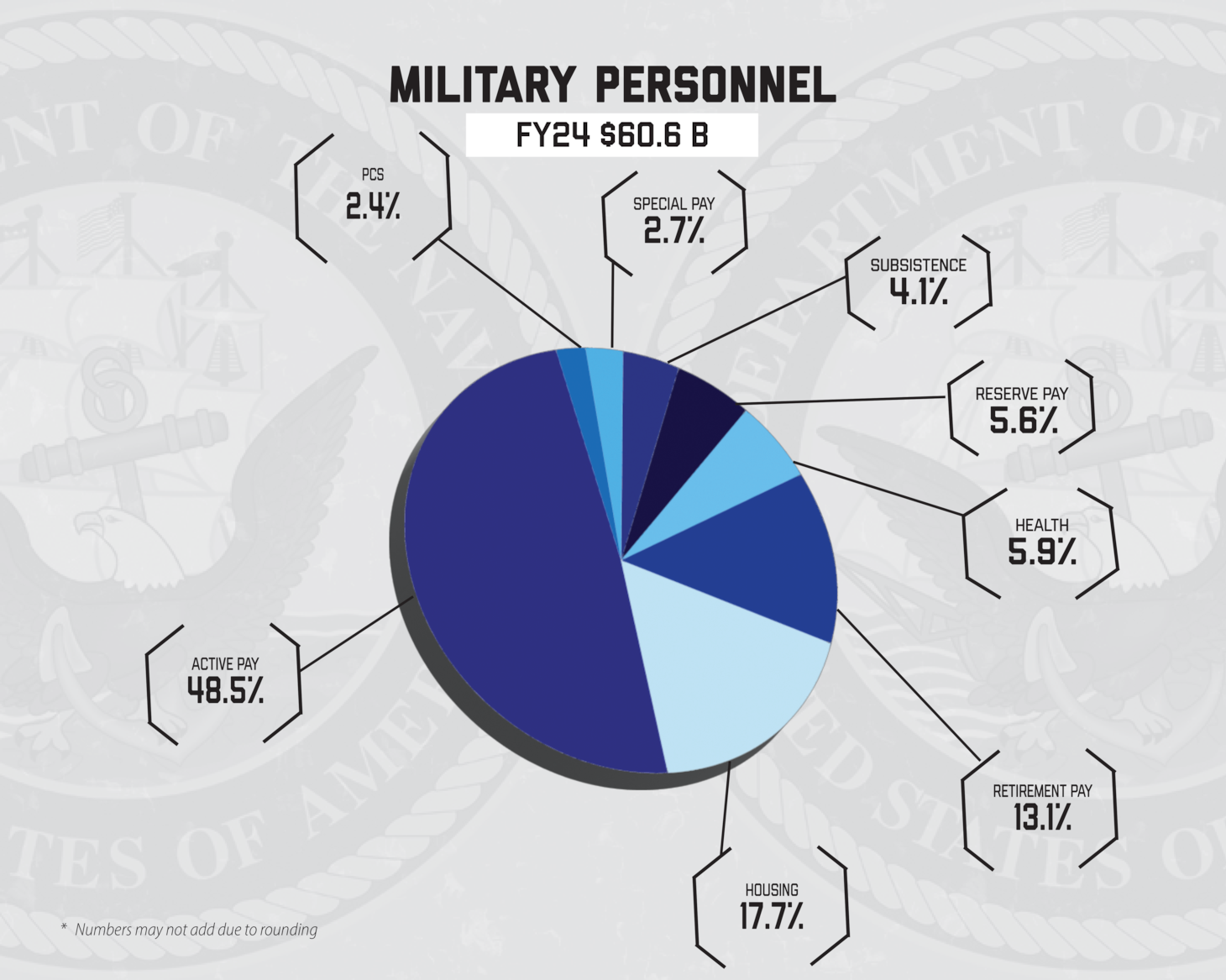
For FY 2024 Military Personnel, the budget request funds an active duty end strength of 347,000 Navy and 172,300 Marine Corps personnel while also funding Selected Reservists and Training and Administration of the Reserve (TAR) personnel of 57,200 Navy and a Marine Corps Selected Reserve end strength of 33,600. This budget empowers our warfighters, works toward elimination of harmful behaviors, cultivates teamwork, prioritizes education, and takes care of our people and their families. The FY 2024 budget submission increases SAPR funding to implement the Independent Review Commission (IRC) recommendations on sexual assault in the military, increases mental health funding by $20 million to support virtual mental health initiatives, as well as efforts to recruit, train, and retain the mental health force, and expand DON child and youth programs. The Department of the Navy continues to examine its education strategy and seeks to address the balance between future force structure, current readiness requirements, and warfighter development.
The Department's budget request was a collaborative, strategy-driven approach that maximizes the resources available. This request represents the best mix of readiness for today, modernization for tomorrow, and investment in the future - while prioritizing our Sailors, Marines, civilians and families, and strengthening relationships with our allies and partners.






